Posterior Pelvic Tilt
Definition Posterior Pelvic Tilt:
Posterior pelvic tilt: the top of the pelvis is rotated back. The effect of the posterior tilt increases spinal flexion.
Anterior pelvic tilt: the top of the pelvis is rotated forward. The effect of the anterior tilt increases spinal extension.
What is a Posterior Pelvic Tilt?
- A posterior pelvic tilt is a short-arc, closed-chain motion of the hip that involves the pelvis rotating posteriorly around stationary femurs.
- The anterior pelvic tilt is when the front of the pelvis drops in relationship to the back of the pelvis. For example, this happens when the hip flexors shorten and the hip extensors lengthen.
- The posterior pelvic tilt is the opposite when the front of the pelvis rises and the back of the pelvis drops. For example, this happens when the hip flexors lengthen and the hip extensors shorten, particularly the gluteus maximus which is the primary extensor of the hip.
- The motion of a posterior pelvic tilt is produced by a force couple created by the abdominal muscles and the hip extensors
- Lateral pelvic tilt describes tilting toward either right or left and is associated with scoliosis or people who have legs of different lengths. It can also happen when one leg is bent while the other remains straight, in that case, the bent side’s hip can follow the femur as the knee lowers towards the ground.
- The left pelvic tilt is when the right side of the pelvis is elevated higher than the left side.
- The right pelvic tilt is when the left side of the pelvis is elevated higher than the right side.
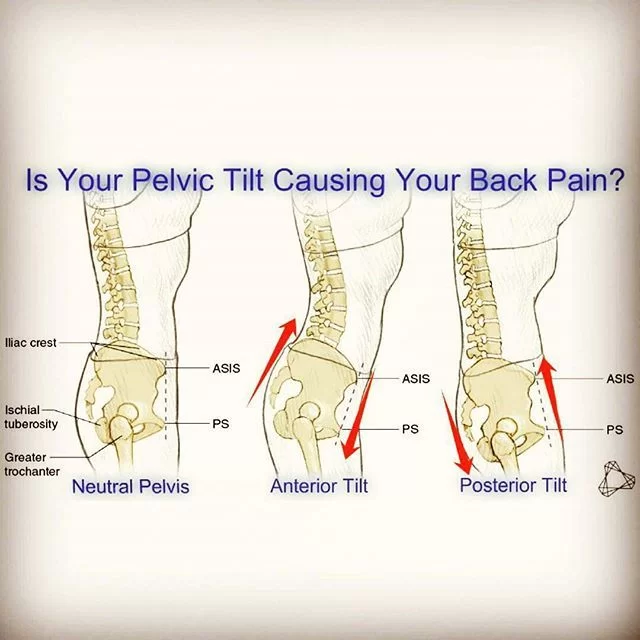
Posterior Pelvic Tilt Symptoms
Posterior pelvic tilt refers to a condition where your pelvis is tilted backward, away from its neutral position. In this pelvic position, the tailbone is tucked in under the body and the front (anterior) portion of the hips tilt up and back.
The posterior (forward) positioning of the pelvis results in a rounding of the lower spine (lumbar lordosis), leading to a flat back.
Like an anterior pelvic tilt, where the lower back arches inward, a posterior pelvic tilt puts a lot of stress on your lower back. This can eventually lead to pain all over the body, including sciatica, which is pain that runs down the back of one of your glutes or thighs.
- weak and tight leg muscles
- shortened tendons around the pelvic bones
- improper balance
- poor posture
- Reduced Lumbar Lordosis
- Lower Back pain
- Hip Pain with or without Knee pain
All of these factors can cause a posterior pelvic tilt. This is when your glutes tuck inwards and the upper body rounds back.
Posterior Pelvic Tilt leads to:
It affects your posture as a whole because your upper back and neck try to compensate for the abnormal pelvic position and are pushed forward.
If you have a posterior pelvic tilt, you’ll also likely have an increased rounded shoulder (aka Thoracic Kyphosis) and a forward head position.
Over time posterior tilt will increase the compression load on the mid and lower back. This increased compression load means that the spine is unevenly loaded, which can lead to injuries including disc prolapse or disk herniation.
Furthermore, the rounding of the lumbar curve puts excessive pressure on your spine and can lead to hip, back, and leg pain. It can even affect the way your clothes fit you and your self-confidence levels.
Causes of Posterior Pelvic Tilt
MOST COMMON: Poor Sitting Posture
If you sit all day, you’re already at risk of a posterior pelvic tilt, but if you sit with poor posture you’re even more at risk. Sitting in a slouched position at your desk all day distorts the normal curvature of your spine and puts stress and strain on all the wrong areas. This leads to weakening of the hip flexors and back muscles. And the hamstrings, gluteal and abdominal muscles get very tight.
Other causes include:
Poor Standing Posture

Just like with the sitting posture, proper standing posture is crucial. If you find yourself rounding your lower back and hunching your shoulders when you stand, then you may have a posterior pelvic tilt posture. You will most likely find your upper body is leaning back more and the abs will feel shortened.
Holding/Carrying Heavy Objects (Like a baby!)
If you are holding heavy objects for extended periods of time, you could develop a posterior pelvic tilt posture as well. Usually, your tailbone will tilt forward (or “under”) as you try to support the “heavy object” with your hips. This elongates your back and shortens the abdominal muscles. Over time this will cause serious postural problems.
Incorrect Exercise Regiment
If you’re participating in an exercise program that focuses on developing your gluteals, abdominal muscles, and hamstrings you might be putting yourself at risk for posterior pelvic tilt. When the abdominal muscles become overdeveloped compared to the counterbalancing back muscles, they can pull the pelvis posterior and cause a flattening of the normal curve in the lumbar spine.
Sleeping Posture
If your mattress or sleeping position restricts the natural curve of your spine, you could develop a pelvic tilt.
Muscular causes to the posterior pelvic tilt.
Abdominal muscle tightness with or without hamstrings tightness may lead to the pelvis into a posterior rotation.
Anterior Pelvic Tilt v/s Posterior Pelvic Tilt
To under Pelvic tilt, it is important to under what is the difference between Anterior Pelvic Tilt and Posterior Pelvic Tilt.
| No. | Anterior Pelvic Tilt | Posterior Pelvic Tilt |
| 1 | When your pelvis is rotated forward, which forces your spine to curve more it is called Anterior Pelvic Tilt. | It is a condition where your pelvis is tilted backward, away from its neutral position. |
| 2 | Exaggeration of the natural lumbar lordotic curvature. (the S-shape of the spine) | Reduced natural lumbar lordotic curvature-flat back posture. (the S-shape of the spine) |
| 3 | More common as compared to Posterior Pelvic Test | Less common as compared to Anterior Pelvic Tilt |
| 4 | Tight lower Abdominal muscle, gluteal and Hamstring muscles | Tightness in Back extensors, and Hip flexors muscles |
| 5 | Weak Back extensors and Hip flexor Muscles | Weak Abdominal and Hip Extensor muscle |
| 6 | Treatment: Stretching exercise of Abdominal muscles, gluteal, and Hamstring muscles | Treatment: Stretching exercise of Back muscles and Hip flexors |
| 7 | Strengthening exercise of Back Muscles and Hip flexor Muscles | Strengthening exercises of Weak Abdominal and Hip Extensor muscle |
How to Diagnose Posterior Pelvic Tilt?
Perform The Thomas Test:
Sit on the edge of a table
Grab both of your knees and lean backward until your back is flat on the table.
Let go of one of your legs and extend at your hip until the back of your thigh touches the table.
Negative Test (Meaning you don’t have a posterior pelvic tilt)
The back of your thigh touches the table without a gap between your thigh and the table.
No Gap.
Positive Test (Meaning you might have a posterior pelvic tilt)
If you have a gap between your thigh and table even after straightening your leg you may have posterior pelvic tilt.
Gap.
Treatment of Posterior Pelvic Tilt
Stretching and Strengthening to Correct Posterior Pelvic Tilt
The best way to correct a posterior pelvic tilt is to balance the muscles affecting the abnormal positioning of the pelvis. Muscles that are chronically tight need to regain their flexibility through stretching. While the muscles that are weak need to be strengthened.
The main areas that need stretching are the Stomach/Abs And Hamstrings.
The main areas that need strengthening are the Lower and middle back and hip flexor/quads.
Stretches/Releases to Correct Posterior Pelvic Tilt:
- Seated Hamstring Stretch
Hamstrings can become tightened with prolonged sitting and standing, leading to poor postures including a posterior pelvic tilt. By stretching out your hamstring, you’re lengthening the muscle and allowing the body to maintain a more neutral pelvic position.

How to perform it:
– Begin in a seated position on a hard chair
– Stretch your left leg out in front of you
– Bend forward and reach for your toes, to the point where you feel a slight stretch
– Hold this position for 15 to 20 seconds
– Slowly return to the starting position
– Repeat on your right side
– Aim for 3 repetitions on each side
Caution: You can pull your back muscle if you go down too far into the stretch. Make sure you don’t overdo it. If a chair is too difficult for you, try moving this exercise to the floor.
2. Abdominal Press Up (Cobra Pose)
Bhujangasana
This stretch will help to stretch out your tightened abdominal muscles, helping to lengthen them and allowing for a more neutral pelvic position.

How to perform it:
– Begin lying on the ground with your hands flat on the floor at the level of your shoulders
– Slowly push your hands to raise your shoulder off of the ground until you feel a slight stretch
– Increase your range of motion by exhaling as you push further into the lumbar extension
– Aim for 5 repetitions
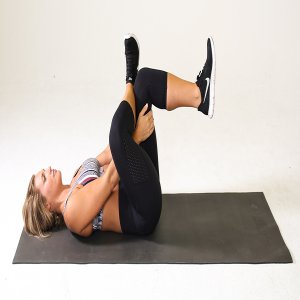
The piriformis muscle is an external rotator of the hip and can become tightened with prolonged sitting. By stretching this muscle, you’ll be allowing for normal movement of the hip, which helps to achieve a neutral pelvic position.
How to perform it:
– Begin lying on your back with your knees bent and feet positioned flat on the floor
– Place your right ankle over your left knee
– Grab your left knee and pull it in towards your chest until you feel a stretch in your right gluteal muscles and hold for 15 to 20 seconds
– Repeat on the right side
– Aim for 3 repetitions on each side.
GLUTEAL STRETCH VIDEO:
4. Doorway Stretch (Bilateral Pectoral stretch)
door frame stretch
Because the abs and chest get super tight during sitting, the doorway stretch will help loosen it up.
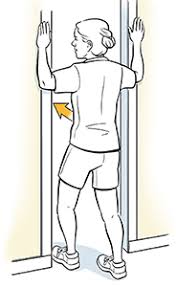
How to perform it:
– Position your elbows and hands in line with a doorframe.
– Step through the door slowly, until you feel a stretch.
– Hold this end position for 15 to 20 seconds before returning to the starting position.
– Repeat this stretch 3 times.
5. Glutes Release
Glutes release
Your buttocks (Glutes) get very tight from prolonged sitting and that’s why massaging that area will help it relax and therefore help release the pelvis into the right position.
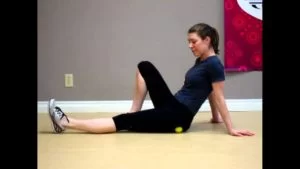
How to perform it:
– Begin in a seated position on the ground with your knees bent.
– Position a massage ball under your right buttock and rest your hands on the ground behind your back.
– Lift your right leg off the ground and roll in small circles on the ball, placing more attention on areas that are tender.
– Perform this exercise on the left.
Strengthening exercises for Posterior pelvic tilt
- Lunges: Lunges help to strengthen your quadriceps. Strengthening these muscles can help to correct a posterior pelvic tilt.
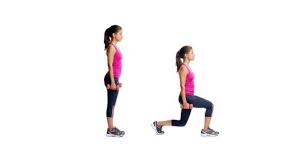
How to perform it:
– Begin by standing with your feet together
– Step your left leg out in front of you
– Bend your left leg to a 90-degree angle (your right knee should touch the floor while your left leg is at 90 degrees)
– Push up on your left leg to return to the starting position
– Repeat on your right side
– Aim for 3 sets of 10 lunges on each side
* Ensure that your knee doesn’t pass the level of your toe while in the lunge position because this position increases stress on the knee.
HOW TO PERFORM LUNGES CORRECTLY?
2. Superman: Superman helps to strengthen your glutes and lower back, which are connected to your pelvis, helping to correct abnormal pelvic positioning.
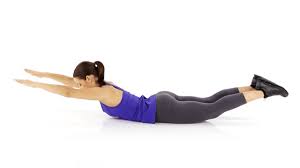
How to perform it:
– Begin by lying on your stomach on the floor with your arms stretched out in front of you
– Slowly lift your chest off the floor and try to hold this position for 30 seconds
– Lower your body slowly to the starting position
– Aim for 3 repetitions
3. Standing Hip Flexion
hip flexor
This exercise helps to strengthen the hip flexors, which helps to keep to correct the imbalance of muscles that are seen with posterior pelvic tilt, and as an added benefit, you get a little balance training too.
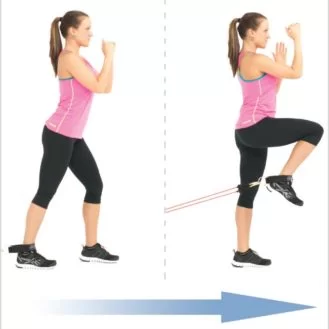
How to perform:
Begin with your feet slightly apart with your hands positioned on your hips (if you need to, you can hold onto the back of a chair for support) – shift your weight to your left leg, while keeping your leg slightly bent – slowly lift your right leg, with your knee bent to 90 degrees – lift your knee as high as possible and aim to have it parallel to the floor or slightly higher – hold the end position for 3 seconds and slowly lower your leg but do not touch the floor – aim to complete 10 repetitions on each side.
This exercise helps to strengthen the hip flexors, which helps to keep to correct the imbalance of muscles that are seen with a pelvic tilt, and as an added benefit, you get a little balance training too.
How to perform it:
– Begin with your feet slightly apart with your hands positioned on your hips (if you need to, you can hold onto the back of a chair for support)
– Shift your weight to your left leg, while keeping your leg slightly bent
– Slowly lift your right leg, with your knee bent to 90 degrees
– Lift your knee as high as possible and aim to have it parallel to the floor or slightly higher
– Hold the end position for 3 seconds and slowly lower your leg but do not touch the floor
– Aim to complete 10 repetitions on each side.
4. Leg Raises
Leg raises help to strengthen your hip flexors which get extremely weak from the Posterior tilt of the pelvis.
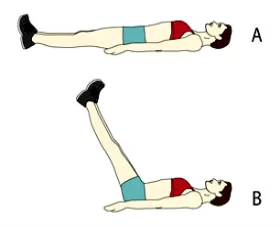
How to perform it:
– Begin by lying flat on the floor with your legs straightened.
– Slowly raise your legs off the ground, by using your abdominal muscles, and allow your lower back to arch from the floor while keeping your arms straight at your side.
– Slowly return your legs to the starting position.
Note: The key to this exercise is to only move your legs, this allows for the development of your core muscles
This exercise is quite difficult, if you have pain when lifting your legs, try bending your knees slightly
5. Rowing
This exercise strengthens all of the major muscles of your back, including the Trapezius and the Rhomboids which will help bring the shoulders back.
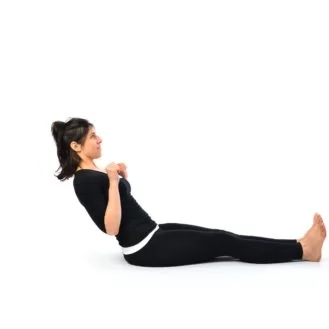
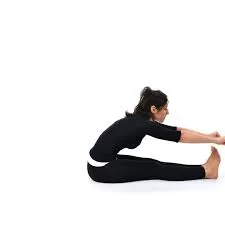
How to perform it:
– Begin by wrapping your Theraband® around a stable piece of furniture. *if you don’t have a stable piece of furniture, you can wrap it around the bottom of your feet.
– Sit on the floor with your legs stretched out in front of you and your knees slightly bent-
– Hold the ends of the Theraband with your palms facing each other and extend your arms straight to get into the starting position.
– Pull the ends of the Theraband® towards you as you bend your elbows and move them slightly behind your torso by squeezing your shoulder blades together.
*be sure to keep your arms close to your body and avoid leaning forward or backward.
– Stop pulling when your hands reach your torso.
– Hold this position briefly before returning to the starting position by straightening your arms.
– Aim for 3 sets of 10 repetitions.
6. Foam rolling for calves (relaxation)
Also called self-myofascial release, foam rolling is essentially like massage therapy. It’s a great postworkout stretch to help relieve tension in various parts of your body. You can purchase foam rollers online or at sporting goods stores. Foam rolling breaks up the fascia, or the connective tissue beneath the skin that is necessary for proper movement. You can foam roll any part of your body, but focusing on your legs may help posterior pelvic tilt.
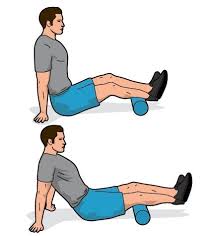
- Lay on your side and put the foam roller under your calf area.
- Slowly roll the foam roller up your calf and focus on any “hot spot.” This is an area where you feel extra tension or tightness.
- Roll over this area for 30 seconds.
- Switch legs and perform the same movement. You can also do the same for your thighs.
- For more pelvic focus and benefit, lie on your back and move the foam roller up the back of your leg.
- Roll the foam up your hamstrings and to your glutes. Sit on any hot spots and focus rolling on that area. Switch legs and do it again.
- Finally, move the foam roller to your back and roll it up your back, stopping to focus on any areas of extra tension.
Although you may feel pain at times, foam rolling can feel relaxing and serve as a form of massage. You can also foam roll across your middle back and massage your spine.
Modifications to Sleeping
To aid in maintaining proper posture while you sleep:
- Avoid sleeping on your stomach.
- If you like to sleep on your back, put a little pillow behind your knees.
- If you sleep on one side, keep a pillow between your knees.
- If you sleep on your back, place a small pillow or rolled towel behind the arch of your back.
- Make sure your mattress and pillow fit your spine’s natural curvature.
Posterior Pelvic Tilt While Sitting
Whether you sit a lot at work or just all the time, it’s crucial to ensure:
- You are seated in a chair that promotes good posture.
- The desk or table you choose allows you to sit up straight and avoid slouching.
- For lumbar support, you can use a pillow or choose a chair that already has this kind of support built in.
- You take the time to stretch and get up and about, particularly if you spend a lot of time sitting down.
Conclusion
A posterior pelvic tilt is an abnormal posture in which the pelvis is tilted backward. It occurs mainly due to a muscle imbalance between the leg muscles and the core muscles, that affects your body, activity, daily posture, as well as working habits.
Symptoms depend upon severity and vary such as slouched posture, abdominal & hamstring muscle tightness, low back pain, and others. Treatment mostly is exercises that strengthen weak muscles, and stretch tight muscles as well as corrective working habits mainly in sleep position and sitting modifications.
FAQ
How do you fix posterior pelvic tilt fast?
To fix the Posterior Pelvic tilt fast perform the following exercise under the guidance of a Physical therapist:
Strengthening exercise of Back extensors muscles and Hip flexors
Stretching exercise of Tight Hamstring and Abdominal Muscles
If Pain is Present use Hot and Cold Packs 2 times a Day.
Avoid Painful exercise and Activity
Proper positioning in sitting, standing, and Sleeping is required.
What does posterior pelvic tilt feel like?
Posterior pelvic tilt changes the pelvic muscle’s pull on your spine, causing your lower back to curve excessively outward. This creates unnatural pressure on your spine. As a result, you may feel low back pain with Hip and Knee pain sometimes with a feeling of heaviness at the lower back to the back of the thigh.
What is posterior pelvic tilt vs normal?
Posterior Pelvic Tilt vs Anterior Pelvic Tilt
The pelvis moves backward is called posterior pelvic tilt and moves forward called anterior pelvic tilt as compared to normal spinal curvature. In anterior pelvic tilt, increased spinal curvature in comparison to natural lumbar curvature (the S-shape of the spine), while in posterior pelvic tilt, there is a reduction in the lumbar spine curvature.

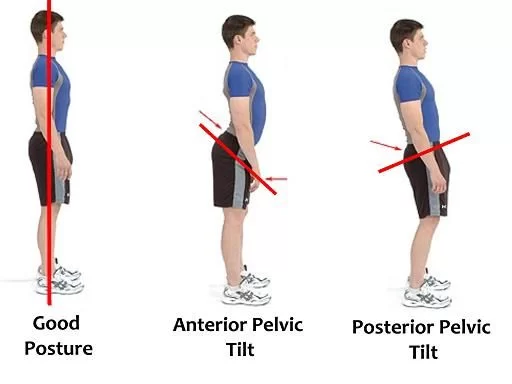


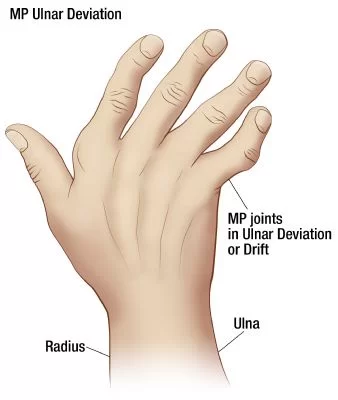
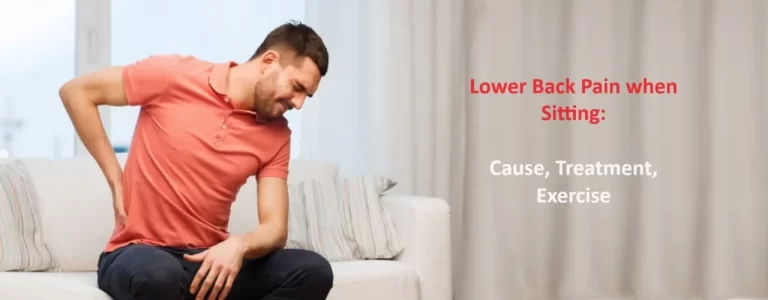
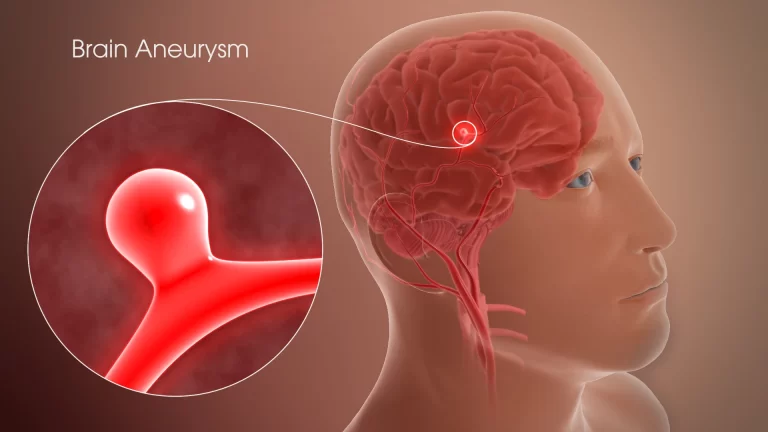
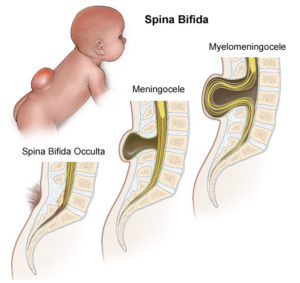
16 Comments